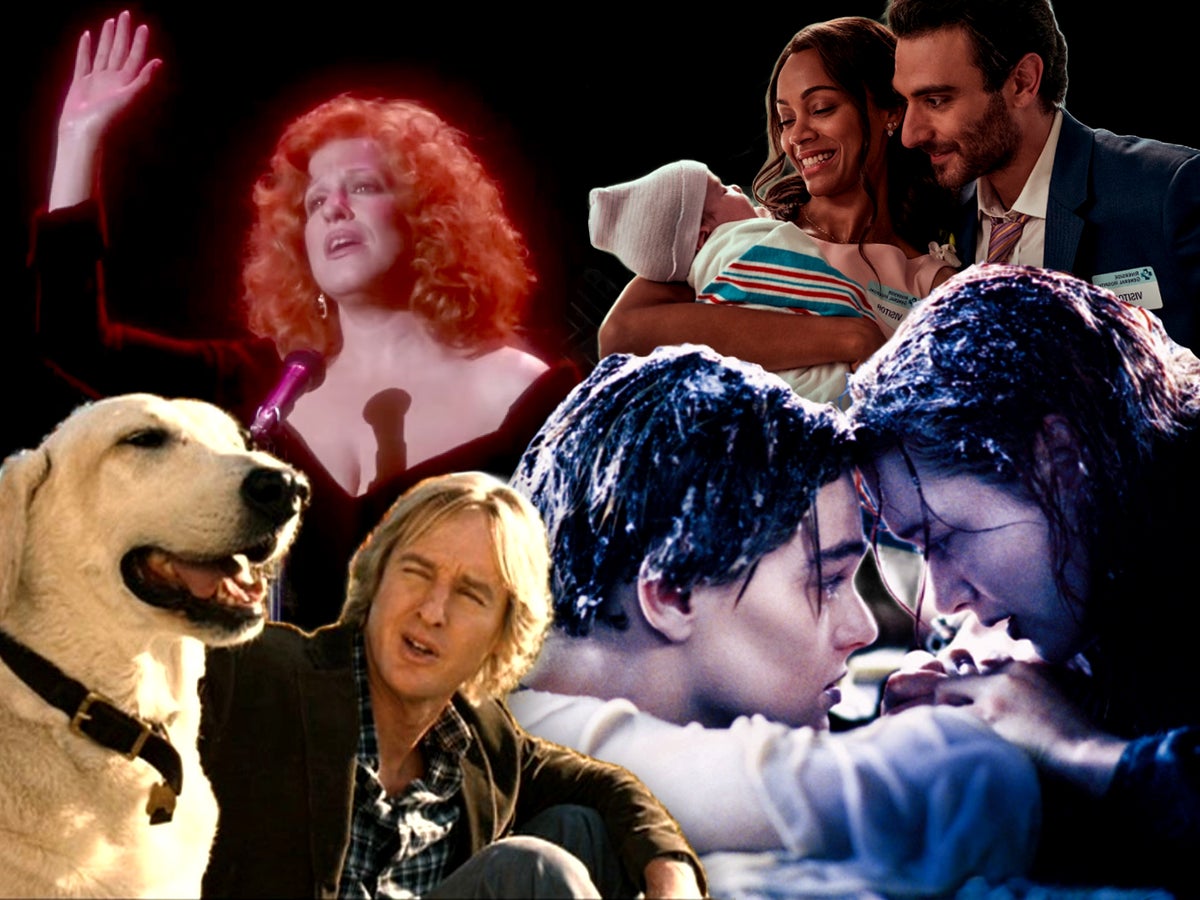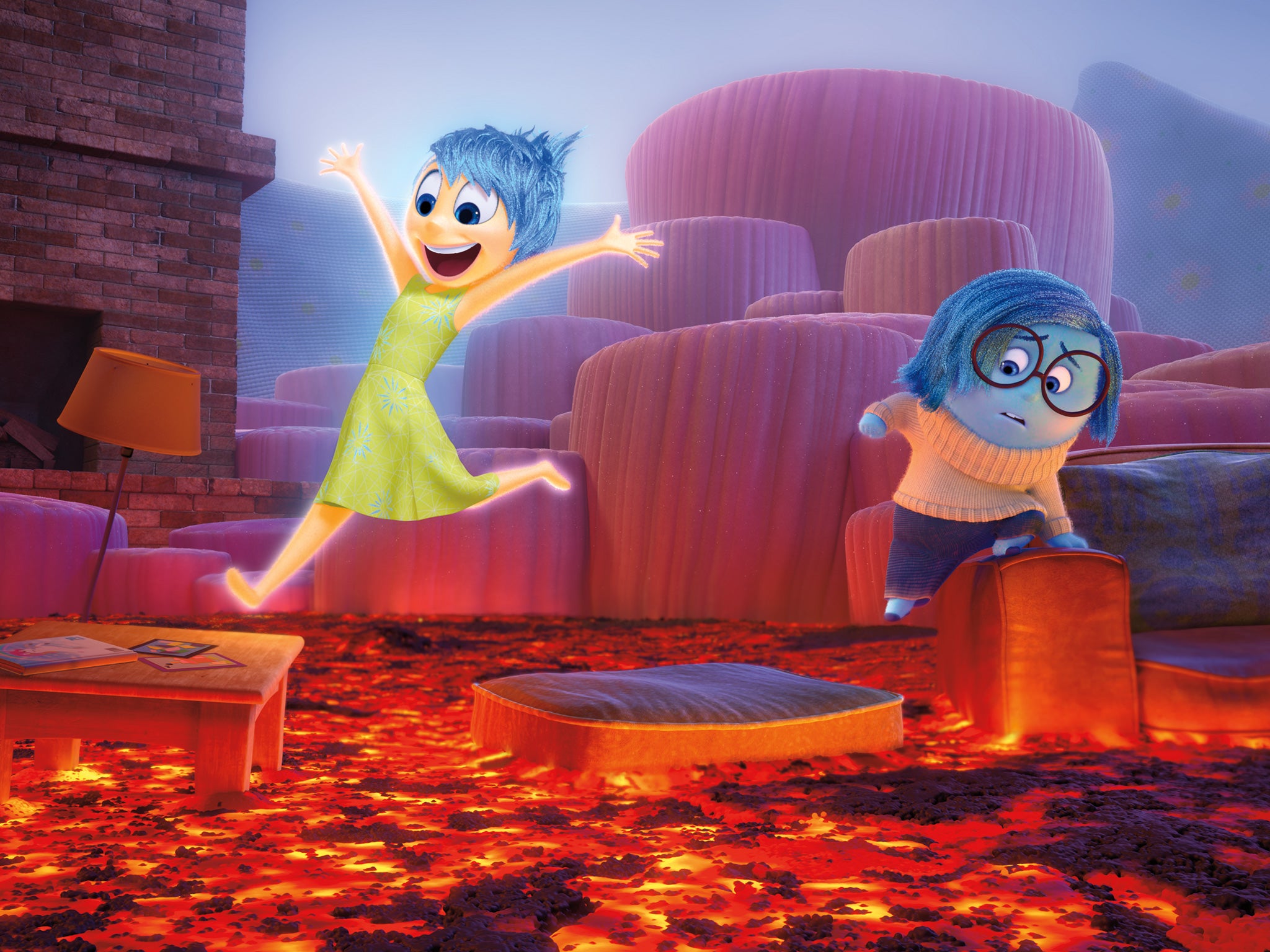
Some films leave a scar. Leonardo DiCaprio vanishing into the sea at the end of Titanic. Jake Gyllenhaal saying “I wish I knew how to quit you” in Brokeback Mountain. The prolonged labrador funeral in Marley & Me. Everyone has a particular movie that emotionally destroys them. Sometimes all it takes is a single line. For me? Ben Stiller’s choked-up “I’ve had a rough year, Dad” at the end of The Royal Tenenbaums does it every time. Other movies, however, charge at you with whole hours of lachrymosity at once, wringing tears from you like a sodden dishcloth.
The genre is the “weepie” and it will never die. Beaches. Steel Magnolias. Love Story. Sophie’s Choice. The weepie’s sole identifying feature is to target your tear duct with laser-guided precision. It’s weathered changing trends and evolving technologies, and emerged as popular as ever; the demand is so strong, a New York cinema even hosted a “cry-along” screening of Beaches a few years back. You’d think it would be cheaper and less embarrassing to just buy a bag of onions and have at ’em.
And it’s not just movies, either: last week saw the release of From Scratch, Netflix’s eight-part TV weepie starring Zoe Saldaña. The Independent’s Amanda Whiting describes the series as a “full-on melodrama, in which Amy (Saldaña) confronts the realities of a broken family and the tragedy of a husband with cancer”. The question is, why do we, as viewers, allow ourselves to suffer these emotional slings and arrows? Not just allow, but willingly – eagerly – seek them out?
It turns out that whenever we watch Macaulay Culkin being maimed by bees in My Girl, we really are there with him. “For a lot of people, our emotional brains struggle telling reality from fantasy,” says Dr Audrey Tang, a psychologist and member of the British Psychological Society. “So even though we know logically we’re in front of a television, we are connecting with the emotions of the characters.”
We’re also hopelessly projecting our own sorrows onto these made-up people. “Sometimes what a character goes through can trigger memories of things that we have experienced in our lives. Or we may project our own emotions or experiences onto a character. And so when we cry, we’re not necessarily crying for the character, but we’re crying for what it’s triggered in us.”
The reason people eagerly turn up to the Odeon armed with tissues and a licence to blubber has to do with the “safe space” that films provide. For some cinemagoers, merely being in a dark room can afford them a place to cry among others without causing a spectacle. But the “safe space” of a weepie is also symbolic: it gives people permission to vent emotions they may otherwise be forced to suppress in their daily lives. “It may well be that somebody who cries a lot at films has to put on a very brave face for whatever reason,” Tang adds. “So you might just go and see it for a reason to cry, rather than because you’re just super-sensitive – it might be a lot deeper.”
But what is actually going on in your brain while you’re sitting there bawling at Up? “Well, the simple answer is that we still don’t completely understand this,” Dr Sophie Scott, a professor of cognitive neuroscience at UCL, tells me. What we do know is that watching sad movies stimulates a “very important network” of areas in the brain – one that dates back far in human evolution, and that we share with other mammals. Researchers have been able to identify the process by studying people with degenerative brain disorders and brain damage.
“These brain areas are associated with the generation of emotional expressions – things like crying, producing tears, making noises, sobbing,” explains Scott. “Now, the reason why that’s happening is because of your emotional state watching the film. Eighty per cent of people feel better when they’ve been crying. So there could be a strong element of emotional release that’s associated with crying over something like a film, that perhaps you even knew was going to make you cry.”
And what about the traditional notion that our propensity to sob depends on our gender? For decades – dating back to Old Hollywood and the era of so-called “woman’s films” – melodramas and tragic romances have typically been seen as women’s fare, and so the Weepie Industrial Complex has steered its content to target them. (The very word “weepie” was colloquially conflated with the dated phrase “chick flick” for years.)
While this notion obviously doesn’t represent every movie viewer, it’s rooted in some element of truth. Men have traditionally – more so than women – been socialised to resist crying in order to avoid showing “weakness”.
“Women are much more likely to cry than men,” says Scott. “But that’s subject to some cultural effects. Men used to cry a great deal more in our culture: it was a sign of emotional civility in the Victorian era. That changed a lot in the last century, around the time of the First World War, when this ‘stiff upper lip’ comes in. But it’s not unusual for [this gender discrepancy] to pan out in other cultures as well, so there may be hormonal influences too. But I think the cultural and individual differences are likely to be bigger.”

Of course, no one is really immune from the solar-plexus knockout of a good weepie – not men, women or even children. In fact, kids have been the target audience of some of the most potently upsetting movies around, from Disney classics like Bambi to modern Pixar animations like Inside Out or Coco. Speaking to The Hollywood Reporter in 2015, Inside Out editor Kevin Nolting explained: “[The emotional moments] are always very relatable, but we have to earn it. We can’t just add a sad beat because we need a sad beat in the movie. We spend a lot of time making sure we can get to that sad beat, that the audience is ready, and that we’re not forcing it on the audience.”
As anyone who has sat through the opening minutes of Up will tell you, Pixar has mastered the all-ages animated weepie. Whether we’re talking about the poignant climax of Toy Story 3, when Woody, Buzz et al stare down their own furnace-based demise, or the soul-bruising disappearance of Richard Kind’s imaginary Bing Bong in Inside Out, Pixar has practically made a cottage industry out of films that slay adults as well as kids.
It might be a stretch to say they’ve got it down to a science, but there’s certainly a formula: Pixar story artist Emma Coats once shared a list of 22 in-depth “Storytelling Rules” used to assemble the company’s reliably devastating movies. (Rule #6, for instance: “What’s your character most comfortable with? Throw the polar opposite at them.”)
A widely shared academic study at Berkeley carried out a few decades ago determined that 1979’s The Champ was, scientifically speaking, the saddest film of all time. But while science can attempt to distil human empathy into bar charts and chemical equations, there’s simply no quantifying what you really go through when a film brings you to genuine tears. No MRI scan or psychology phrasebook could ever truly articulate what it means to sit and watch It’s a Wonderful Life in the early hours of Christmas Day, sobbing like clockwork as Jimmy Stewart rediscovers his will to live.
In his classic coming-of-age novel Great Expectations, Charles Dickens wrote: “Heaven knows we need never be ashamed of our tears, for they are rain upon the blinding dust of earth, overlying our hard hearts. I was better after I had cried, than before – more sorry, more aware of my own ingratitude, more gentle.” It might sound daft to apply this sentiment to someone who’s just wept their way through PS I Love You. But that doesn’t mean it’s not true.







